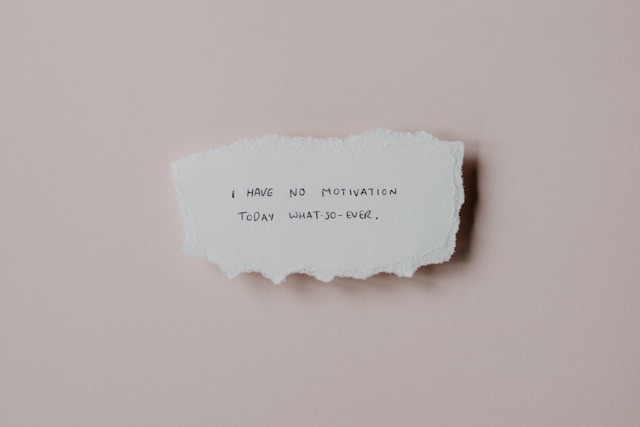Ever found yourself staring at a blank document, a pile of laundry, or an untouched to-do list, convinced you’ll “get to it later”? You know, that important thing that needs doing, but suddenly reorganizing your spice rack or binge-watching that obscure documentary seems way more appealing? If this sounds familiar, welcome to the club! Procrastination is a universal human experience, a sneaky little habit that can derail our goals, inflate our stress levels, and leave us feeling a bit, well, guilty.
It’s not about being lazy, though it often feels that way. In fact, most procrastinators are highly capable people who simply get stuck in a frustrating cycle of delay. The good news? You’re not broken, and this isn’t a moral failing. There’s real science behind why we procrastinate, rooted in our brains and our emotions. And once we understand why we do it, we unlock the secrets to effectively stop putting things off. This article isn’t here to scold you; it’s here to empower you. We’ll dive into the fascinating psychological and neurological reasons for procrastination, then equip you with practical, empathy-driven strategies to break free from its grip. Ready to finally tackle that thing you’ve been avoiding? Let’s get to it!

The Procrastination Paradox: Why We Delay What We Know We Should Do
On the surface, procrastination seems illogical. We know a task is important, often urgent, and that delaying it will likely lead to more stress later. Yet, we do it anyway. This “procrastination paradox” lies in a fascinating interplay between our short-term desire for comfort and our long-term goals.
The Emotional Regulation Theory: It’s Not About Time, It’s About Feelings
For a long time, people thought procrastination was simply a time management problem. But research, particularly by Dr. Tim Pychyl, a leading expert on procrastination, suggests it’s primarily an emotional regulation problem. We procrastinate not because we’re bad at managing time, but because we’re trying to manage our negative emotions.
Think about it: when faced with a task, what feelings come up?
- Anxiety: “What if I fail?” or “What if it’s too hard?”
- Boredom: “This task is so dull.”
- Frustration: “I don’t know where to start.”
- Resentment: “Why do I even have to do this?”
- Overwhelm: “There’s too much to do, I can’t possibly do it all.”
When these uncomfortable feelings arise, our brain seeks immediate relief. What’s the easiest way to escape those feelings? Avoid the task! By choosing a more pleasant, less demanding activity (like scrolling through social media or doing something instantly gratifying), we get a temporary mood boost. It’s a classic case of short-term gain for long-term pain. We feel better now, but often worse later when the deadline looms and the stress truly hits.
Real-Life Scenario: Sarah has to write a detailed report for work. The moment she thinks about it, she feels overwhelmed and anxious about making it perfect. Instead of opening the document, she finds herself reorganizing her email inbox, then checking her favorite news site, then watching a few YouTube videos. She’s not being lazy; she’s unconsciously trying to escape the uncomfortable feelings associated with the daunting report.
The Limiting Beliefs That Fuel Delay
Beyond immediate emotional discomfort, underlying beliefs about ourselves and the task can also feed procrastination.
- “I have to be in the mood.” This is a classic trap. We wait for inspiration to strike, for the “perfect” moment, which rarely comes. As artist Chuck Close famously said, “Inspiration is for amateurs. The rest of us just show up and get to work.”
- “I work better under pressure.” While some people do experience a burst of adrenaline closer to a deadline, consistently relying on this can lead to subpar work, increased stress, and missed opportunities. It’s a risky strategy that often backfires.
- “This task is too big/complex.” When a task seems enormous, our brain can become paralyzed by the sheer scope of it. We don’t see a clear path forward, so we avoid starting altogether.
- Perfectionism: The fear of not doing something perfectly can lead to not doing it at all. If the standard is impossibly high, why even try? This often stems from a fear of judgment or failure.
Your Brain on Procrastination: A Peek Under the Hood
Our brains are complex, and certain areas play a key role in our tendency to procrastinate. Understanding this can help us be more compassionate with ourselves and develop targeted strategies.
The Prefrontal Cortex vs. The Limbic System
Imagine your brain has two main characters:
- The Prefrontal Cortex (PFC): This is the “responsible adult” of your brain, located right behind your forehead. It’s responsible for executive functions like planning, decision-making, impulse control, and understanding long-term consequences. It’s the part that knows you should do the task.
- The Limbic System: This is the “impulsive kid” part of your brain, a deeper, older region associated with emotions, pleasure, and immediate gratification. It’s the part that craves instant comfort and wants to avoid pain now.
When you’re faced with an unpleasant task, your limbic system screams, “Danger! Avoid!” and pushes you towards immediate relief. Your PFC tries to reason with it, “No, this is important for your future!” But the limbic system’s cries for immediate comfort are often louder and more compelling in the moment. Procrastination is often the result of the impulsive, short-term oriented limbic system winning the battle over the rational, long-term focused prefrontal cortex.
The Role of Dopamine and Reward
Dopamine is our brain’s “reward chemical.” When we do something pleasurable, dopamine is released, making us feel good and reinforcing that behavior. Procrastination taps into this system. When you avoid a dreaded task and instead do something instantly enjoyable (like watching a funny video), your brain gets a hit of dopamine. This reinforces the avoidance behavior, making it more likely you’ll procrastinate again next time. It’s a self-perpetuating cycle.
Decision Fatigue: The Brain’s Energy Drain
Every decision we make, no matter how small, saps a tiny bit of our brain’s energy. This is called decision fatigue. When you’re faced with a big, complex task that requires many decisions, your prefrontal cortex can get exhausted. This makes it harder to resist impulses and easier to fall into the procrastination trap. That’s why people often make poorer choices at the end of a long day.

Actionable Strategies to Outsmart Procrastination
Alright, we get why we procrastinate. Now for the good stuff: how to stop. These aren’t magic bullets, but consistent application of these strategies can genuinely transform your relationship with difficult tasks.
1. Make It Tiny: The Power of Micro-Actions
One of the biggest reasons we procrastinate is that tasks feel too big. Break them down until they’re ridiculously small. So small, in fact, that your brain can’t justify avoiding them.
- Scenario: You need to write a 20-page report.
- Instead of: “Write report.”
- Try: “Open document.” (That’s it!)
- Next: “Write one sentence.”
- Then: “Create a heading.”
- Scenario: You need to clean your whole house.
- Instead of: “Clean house.”
- Try: “Pick up one item of trash.”
- Next: “Wipe down one countertop.”
The goal isn’t to finish the task; it’s just to start. Once you start, momentum often takes over. The resistance to beginning is usually the hardest part. As Professor Pychyl puts it, “Just get started. Get started is the key.”
2. Time Travel to Your Future Self: The Empathy Trick
Remember how procrastination gives us short-term relief for long-term pain? Let’s flip that. When you’re tempted to procrastinate, vividly imagine how your future self will feel if you don’t do the task.
- “Future me will be stressed, sleep-deprived, and scrambling.”
- “Future me will have less time for fun because I’ll be stuck on this.”
Now, imagine how amazing future you will feel if you do the task now.
- “Future me will be relaxed, proud, and free to enjoy the evening.”
- “Future me will have peace of mind knowing this is done.”
This simple act of empathy for your future self can be a powerful motivator, shifting your focus from immediate relief to long-term well-being.
3. Change Your Environment, Change Your Behavior
Our environment strongly influences our habits. Make it harder to procrastinate and easier to focus.
- Eliminate Distractions: Turn off phone notifications, close unnecessary browser tabs, put your phone in another room. Create a dedicated workspace free from temptation.
- “Temptation Bundling”: Pair a task you dread with something you enjoy.
- “I’ll only listen to my favorite podcast while I’m doing laundry.”
- “I’ll only watch that new show while I’m on the treadmill.”
- “I’ll only eat this delicious snack while I’m sorting through invoices.”
- Pre-Commitment: Make it harder to back out. Tell a friend your deadline, schedule a meeting to present your progress, or book a quiet co-working space.
4. Schedule Your Procrastination (Seriously!)
This sounds counterintuitive, but it’s brilliant. If you know you’re going to procrastinate anyway, schedule it.
- “I’ll work on this report for 30 minutes, then I’ll allow myself to scroll social media for 10 minutes.”
- “I’ll tackle this difficult email, and then I’ll take a coffee break.”
This technique acknowledges your brain’s desire for immediate gratification but puts you in control. It turns procrastination from an impulsive derailment into a conscious, limited reward.
5. Practice Self-Compassion, Not Self-Criticism
When we procrastinate, our inner critic often goes into overdrive: “You’re so lazy! Why can’t you just do it?” This negative self-talk actually increases procrastination because it amplifies the very negative emotions (like anxiety and shame) that led to delaying in the first place.
Instead, practice self-compassion. Acknowledge that you’re struggling, that it’s tough, and that you’re human. Talk to yourself like you would a good friend. “It’s okay that I’m feeling overwhelmed by this. What’s one small step I can take to make it a little easier?” Studies have shown that self-compassion actually reduces procrastination, likely because it lowers stress and makes us more resilient. (Source: Research by Dr. Kristin Neff on self-compassion.)
Sustaining Momentum: Beyond the First Step
Getting started is half the battle, but keeping going is crucial.
The Pomodoro Technique: Focused Bursts
As mentioned in the productivity article, the Pomodoro Technique (25 minutes of focused work, 5-minute break) is excellent for breaking down tasks and maintaining focus. It also helps with the emotional regulation aspect by providing regular, predictable breaks that act as mini-rewards.
Reward Yourself (Strategically!)
Don’t just use rewards for procrastination; use them for completing segments of your work. Once you’ve completed a significant chunk of a dreaded task, give yourself a genuine, pre-planned reward. This could be watching an episode of your favorite show, enjoying a special treat, or spending time on a hobby. This trains your brain to associate the task with positive outcomes, building a more virtuous cycle.
Reflect and Adjust: Your Personal Procrastination Map
At the end of each week, take a few minutes to reflect.
- What tasks did I procrastinate on?
- What feelings came up before I delayed? (Boredom? Anxiety? Overwhelm?)
- Which anti-procrastination strategies worked best for me this week?
- What can I try differently next week?
This ongoing self-awareness and adjustment will help you tailor your approach to your unique procrastination patterns.
Conclusion: Befriending Your Inner Procrastinator
Procrastination isn’t a flaw in your character; it’s a deeply human, often emotionally driven response to discomfort. By understanding the science behind why we procrastinate – the tug-of-war between our prefrontal cortex and limbic system, our desire for immediate gratification, and the emotional escape it offers – we can approach it with more empathy and less judgment.
The good news is, you’re not doomed to a life of perpetual delay. By implementing strategies like breaking tasks into tiny pieces, practicing self-compassion, strategically managing your environment, and even scheduling your procrastination, you can gently but firmly guide yourself toward action. It’s about building new neural pathways and creating positive feedback loops that reinforce productivity over avoidance.
So, the next time you feel that familiar urge to put something off, pause. Acknowledge the emotion, then choose one small, immediate action. You have the power to change this pattern. The only thing truly standing in your way is that first step. Ready to take it?
Frequently Asked Questions (FAQ)
Q: Is procrastination always bad?
A: While chronic procrastination is detrimental, sometimes a little delay can be beneficial. It can provide time for ideas to “percolate” in your subconscious, leading to more creative solutions. However, this is “active procrastination” where you’re using the time productively, not just avoiding. The key is intent and outcome.
Q: What if I have ADHD? Does that change anything about procrastination?
A: Yes, absolutely. For individuals with ADHD, executive function challenges (like planning, starting tasks, and maintaining focus) can make procrastination significantly more challenging. Strategies like extreme task breakdown, external accountability, body doubling, and medication (under medical guidance) can be particularly helpful. Seek professional advice if you suspect ADHD is a factor.
Q: How can I deal with “analysis paralysis” when starting a task?
A: Analysis paralysis, or overthinking, is a form of procrastination. To combat it, set a strict time limit for planning (e.g., “I’ll plan for 15 minutes, then I must start”). Also, embrace the “good enough” principle for initial steps. The goal is to get moving, not to have a perfect plan from the outset.
Q: My spouse/partner/friend procrastinates. How can I help them without being judgmental?
A: Focus on empathy and support, rather than nagging. Understand that it’s an emotional struggle, not laziness. You can offer to be an accountability partner, help them break down tasks, or encourage them to try some of the strategies mentioned here. Avoid criticisms like “Why haven’t you done that yet?” and instead ask, “How can I support you in getting started on this?”

